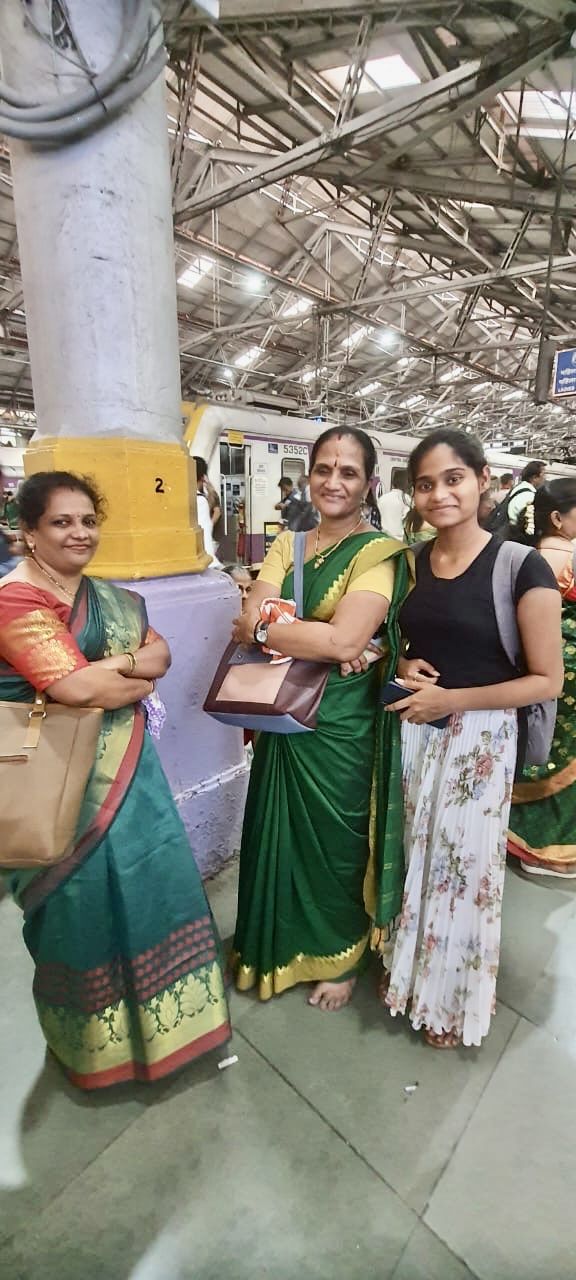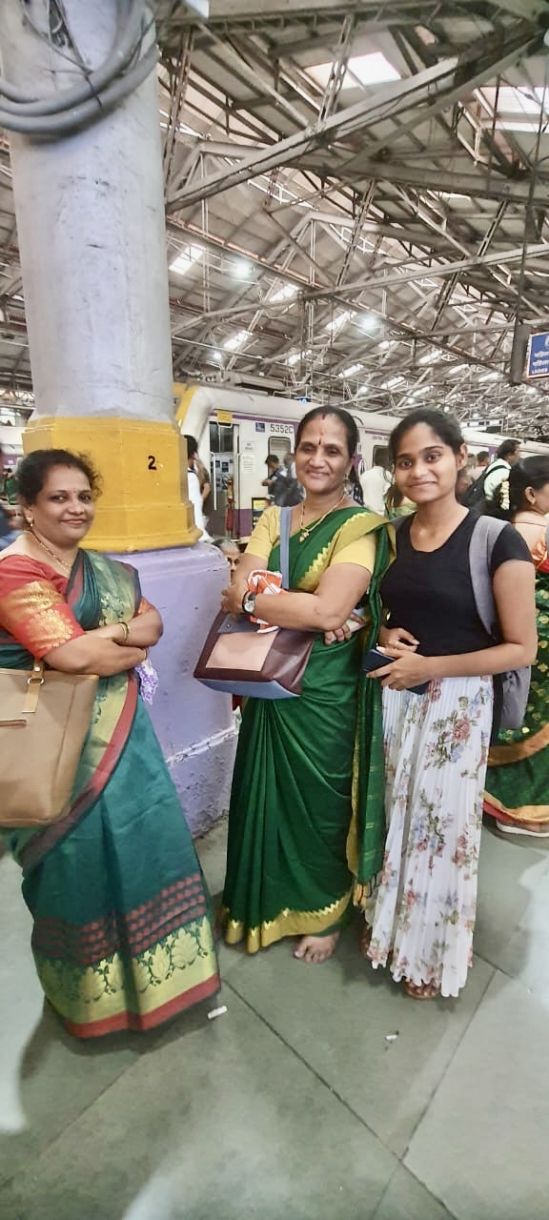From the Commuters of Mumbai

From the Commuters of Mumbai
One of the most pivotal components of the Gendered Mobility in Climate Action Project is the collection of primary data. The nature of the project is such that it demands the articulation of people’s realities through rich, qualitative narratives - narratives which give us a glimpse of the everyday lives, aspirations and apprehensions of people moving through Mumbai. Spearheading the project, Vidisha and Anamika held a workshop for the interns. The workshop focused on guiding us to capture the stakeholders’ narratives of mobility in Mumbai and foregrounded semi-structured interviews as avenues to record with greater detail and nuances. Therefore, it was imperative to have an almost conversational flow to the questionnaire where a set of “nudges” would act as the framework. Ideally, the interviews were to be carried by non-leading questions because leading questions tend to prime the interviewees to unknowingly align with the goal of the researchers (Webb, 2017).
These nudges were:
- How do you travel every day? ( the mode and the route and the time)
- Where do you work, and how long have you been travelling like this?
- Do you step out for just your job, or are there other reasons? Do you travel the same way for other activities?
- When you travel every day, what challenges do you face? (Is your walk comfortable? Do you get rickshaws on time? Why is there a rush? How do you feel before/after boarding the train? Do you get a seat? Have you had any unpleasant experiences while commuting?)
- What are your views on safety, especially at night? (have you travelled late at night before? How did you feel?)
- How does everyone else in your family travel?
- What is your routine after reaching home and before leaving your house in the morning?
- Why do you take the local train despite so many challenges?
In this phase of interviews, our focus was on women commuters, particularly between the 30 to 50-year age range. Our task was to gather their narratives, especially at the intersections of daily routines, last-mile connectivity and safety. We chose Central Line as the site, with Kurla and CSMT stations as the terminals.
It was a warm Friday evening. Three of us (Pranaya, Ritika and I) met at the bustling Kurla Station to conduct the interviews. We waded through the turbulent currents of moving passengers, trying to gauge who might be willing to lend fragments of their realities through interviews. The platforms were mostly covered with shades of green kurtas and sarees (since it was the fifth day of Navaratri), with spots of other colours in-between these shades. Identifying people who could be conducive to talk to was tougher than we thought and the difficulty got compounded by the hustle and bustle of these stations. We tried approaching commuters who were waiting for a long time but many of them, unsurprisingly, hesitated to talk. In all honesty, our greatest hurdle was to get them to talk - anxieties from both sides were high. One commuter told us that we were conducting our interviews at the wrong line and added, “You should be working at the Western Line! It is much busier, especially at this time.” She really knew the line like the back of her hand - she had been travelling in it for twelve years now from Churchgate to Kalyan.
Convergences and contestations
A preliminary reflection on our responses led us to derive certain commonalities between the passengers. A common thread connecting many female travellers was their constant juggling unpaid care work at home and paid jobs in offices. Some women’s routines started at 5:30 am and ended at 8 pm, these routines being a dizzying array of childcare, domestic work and a 9-to-5 job. One could see the fatigue in their faces. Many were daily commuters for over a decade and had forged a bond with their commute modes.
There were also divergences, especially between male and female travellers’ testimonies. Men felt more comfortable during their commute to work, while women expressed their tiredness and unease by the end of their commute. A significant reason behind this is the differential and often disproportionate share of domestic labour that working women (especially those who were married) were undertaking. Another difference was public transport patronage between men and women from the same family. When we asked women whether any other male members of their families travelled by public transport (in this case, the train), most of them stated that they used their bikes - something that could indicate that the men practice greater autonomy even during the commute. A majority of these reflections align with popular conceptions (or sometimes, misconceptions) of gender roles. However, there were outliers as well. One particularly enthusiastic respondent shared that he partook equally in household activities with his wife, beaming with pride. He also added that the long commute made him tired and joked that his procrastinating nature didn’t help this disruption of routines either. Another male respondent, while describing his experience overall as comfortable, complained about the uncertain waiting time to catch his train. This uncertainty often caused him to miss doing his namaz at home, which was highlighted during the interview. He says, “There are very less trains from Asangaon. I have to catch a train at 7:18 pm and it is almost 40 minutes now.” he adds with astonishment, “Forty minutes to wait for a train, in Mumbai, in 2022. Can you imagine?” We could not imagine either.
Last-mile Disconnectivity
Most respondents depended on auto-rickshaws and informal transit for last-mile connectivity. Once again, there was a discrepancy in the auto-rickshaw patronage between men and women. Most of the male respondents used their bikes to cover the last mile, while women are dependent on modes like auto-rickshaw and even paratransit options like share autos. One woman recalled that auto-rickshaws were not always on time. She states “But one has to wait for auto-rickshaws, right?” Another lamented the pollution and construction debris she had to face every day while getting to the station, “There is so much dust and pollution, especially during traffic jams.” The path to the station seemed more perilous than the journey for her.
REFERENCES
Webb, N. (2017). Survey: leading questions. In M. Allen (Ed.), The sage encyclopedia of communication research methods (pp. 1711-1711). SAGE Publications, Inc, https://dx.doi.org/10.4135/9781483381411.n605




